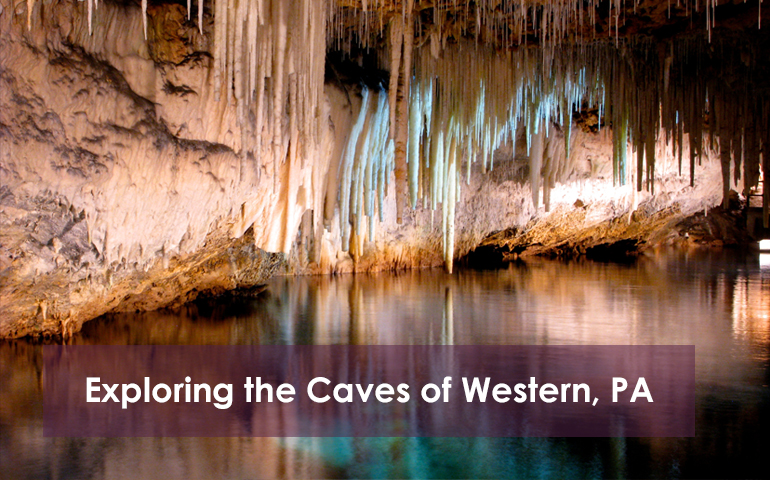
Exploring the Caves of Western, PA
by Chris Petry
You don’t have to be Batman to enjoy hanging out in a cave. After all, they include some of the richest, most geologically diverse, and downright fascinating natural rock formations on the planet. Or, should I say beneath it?
According to National Geographic, there are four different types of caves. First, there’s the coastal cave. Coastal caves are tunneled into cliffs and coastline by the whipping of waves from a body of water. Next, there are lava caves. Sounds pretty cool, huh? Lava caves are created by a flood of lava that cools into a hollowed-out tube. Then you have glacial caves. These are the result of warming water within the center of an ice structure. Finally, you have karst caves. These are far and away the most common variety and probably what you imagined as soon as you read the headline. Karst, is a landscape created by the acidic dissolution of bedrock, which forms sink holes (yes, like the one that swallowed that bus in Downtown Pittsburgh once).
Why am I telling you all this? Well, it’s almost July. This rain is about to dry up like an egg in a cast iron skillet on Venus. We’re talking three-digit temperatures. Want to beat the heat AND learn a little about the crucial biosphere below your feet? Then you should explore some of the cavernous delights within a reasonable drive of your neighborhood.
To prepare, I think it’s important you acquaint yourself with some of the most basic cave jargon. That way you can focus on looking at the caves and not staring awkwardly at an underpaid tour guide. Here are some of the things that’ll help you on any cave tour.
Raise your hand if you can tell the difference between a stalagmite and a stalactite? Did you actually raise your hand? Feel silly realizing I’m not there to see it? Anyway, stalagmites are columns that form from the cave floor. These are caused by an accumulation of mineral drippings from the ceiling. Stalactites grow from the ceiling itself. Speleology is the study of caves. Spelunking is the exploration of caves. Troglofauna are the things that live in caves. Except people. They get their own classification: troglodyte. There you have it. Now you’ll know what the tour guide is talking about! Time to book a tour. Check out the links below for some fun in the su... dark?
Laurel Caverns- Let’s start with the big one. This is, by most measures, the biggest cave in the Commonwealth. It’s near Uniontown, about an hour Southeast of Pittsburgh.
Penn’s Cave- If your headed to State College for a home game, you’ll definitely want to make time to explore Penn’s Cave. The biggest selling point? The tour is conducted by boat. That’s right. You’ll have to do your spelunking while navigating an underground stream. Pretty neat stuff.
Coral Caverns- If you’re in Bedford County for any reason, check out this family-owned cave that is highlighted by a sea coral wall. Yes, that’s correct. The wall was formed in pre-history when a sea covered the terrain.
Lincoln Caverns- Jump on Route 22 and head out to Huntingdon, PA to check out Lincoln Caverns as well as Whisper Rocks, a 2nd independent cave system right next door. That’s a lot of cave for your cash.
Wetzel’s Cave- Want something a little more low key? Hike out to Wetzel’s Cave near Wheeling, WV, just minutes from Washington, PA. It’s not a guided tour cavern so it’s on you to take the necessary safety precautions. The cave was a hiding spot for the 18th century frontiersman and noted psychopath Lewis Wetzel. Caves are supposed to be dark but that guy… wow.





